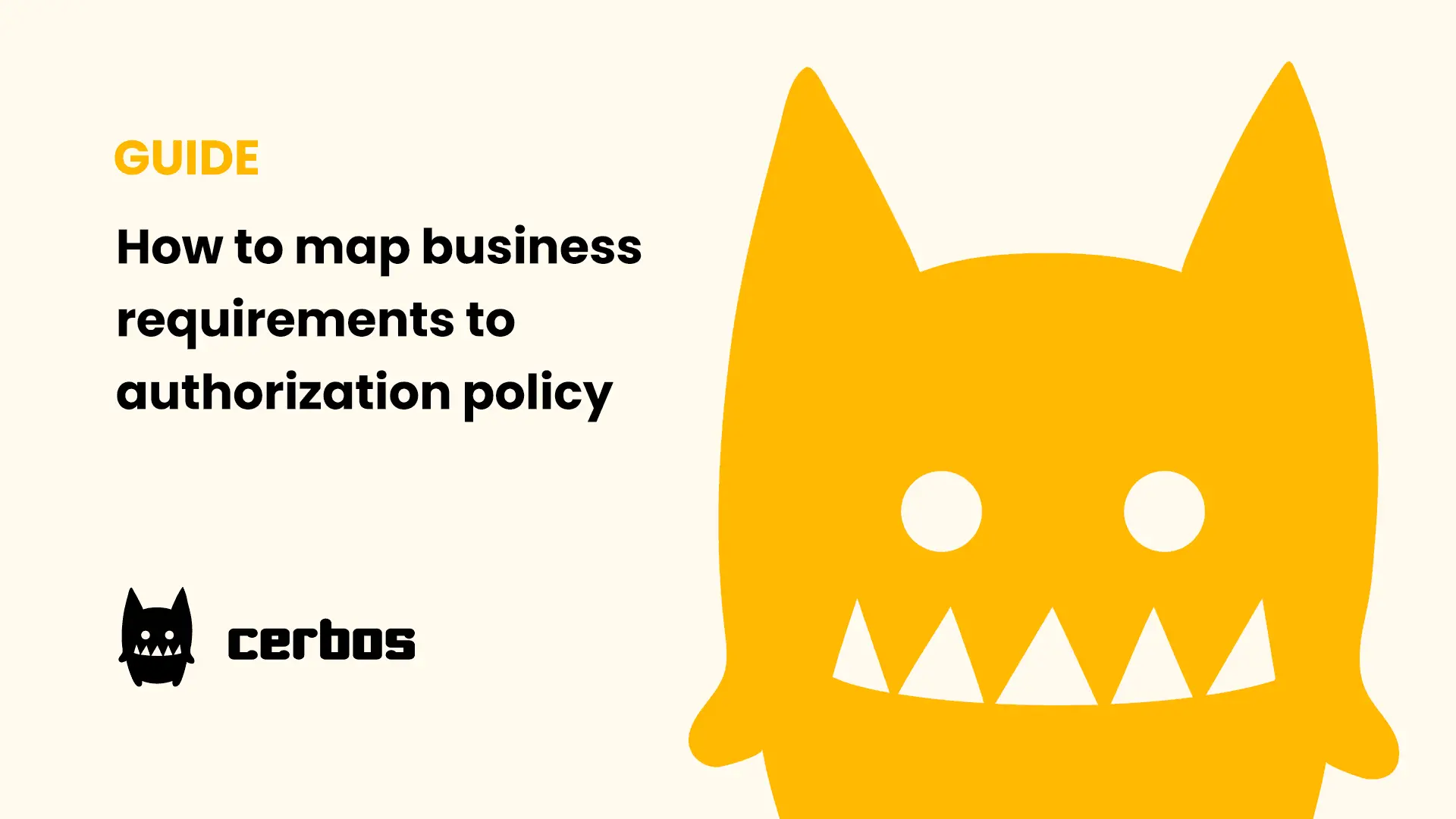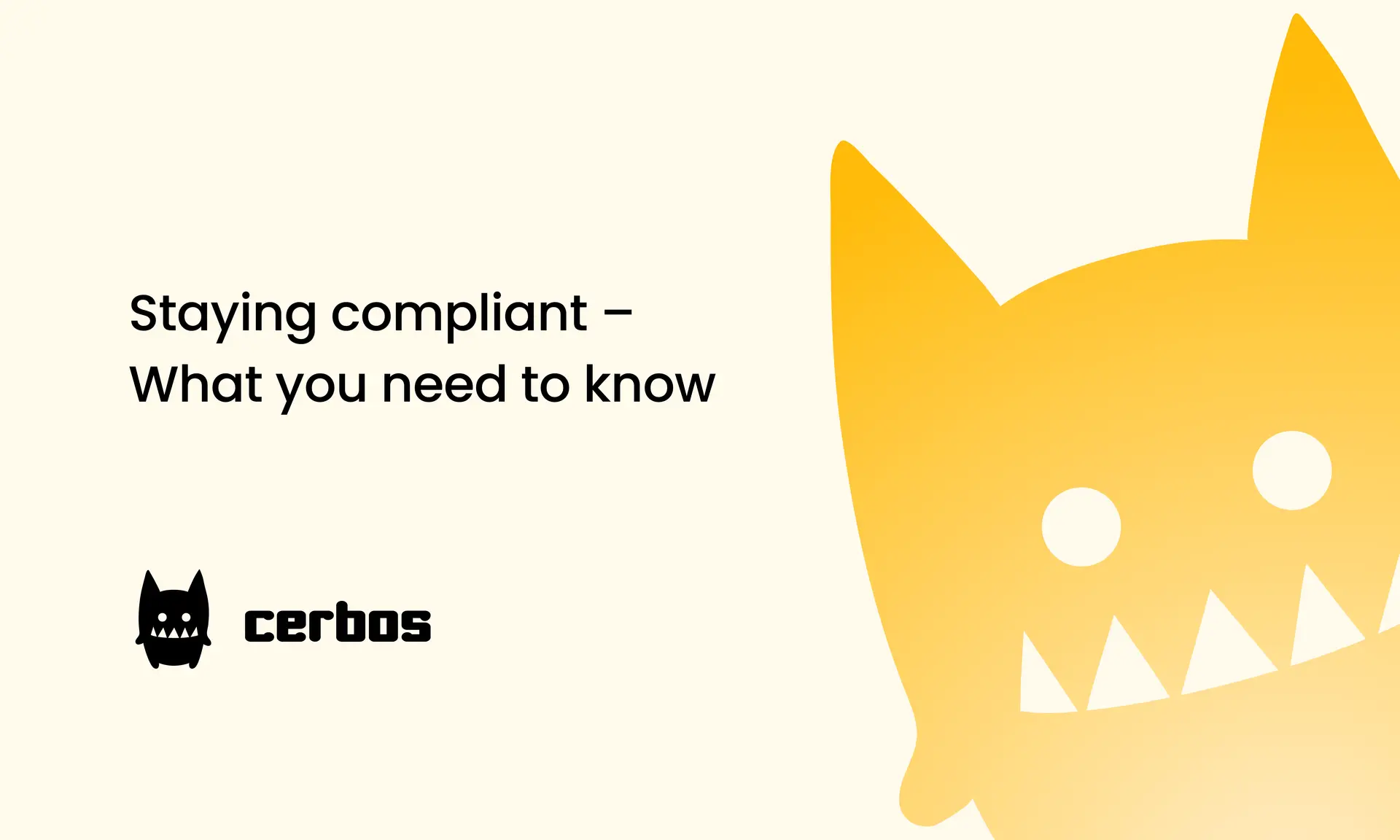What is externalized authorization management (EAM) and its benefits
As systems grow in complexity, managing authorization becomes increasingly challenging. Many of us have been there - starting with simple role checks scattered throughout our codebase, only to watch them evolve into an unmanageable maze of conditional statements and security rules.
Let’s go through how externalized authorization management (EAM) can help us break free from this pattern.
The problem with traditional authorization
Traditional authorization implementations typically embed access control logic directly within the core application code. Consider this common pattern:

This approach might work initially, but it quickly becomes problematic as your requirements evolve. You'll encounter several challenges, such as:
- Authorization logic duplicated across services
- Complex conditional statements mixing business and security concerns
- Policy changes requiring code deployments
- Difficulty maintaining consistency across microservices
- Limited visibility into authorization decisions
Let’s explore how externalized authorization management (EAM) solves these issues.
Understanding externalized authorization management
EAM fundamentally changes this paradigm by treating authorization as a separate architectural concern. Instead of embedding rules in your application code, you delegate authorization decisions to a specialized service that acts as a Policy Decision Point (PDP). The PDP evaluates the request against the centrally managed policy to determine a user’s access rights.
Modern enterprise systems face increasingly complex authorization requirements. Beyond simple role-based checks, we need to evaluate dynamic contexts, complex relationships between resources, and real-time conditions that affect access decisions. When authorization logic is embedded in application code, these requirements often lead to tangled conditional statements that are difficult to audit and maintain. More importantly, this approach creates security blind spots as authorization rules become distributed across various services with no central oversight.
Externalized authorization management addresses these challenges by providing a dedicated control plane for authorization logic. This architectural approach allows us to define, enforce, and monitor authorization policies with the same rigor we apply to other critical infrastructure components. The centralization of policy management brings significant technical advantages that we'll explore in detail.
6 technical benefits of externalized authorization management
The benefits of EAM extend far beyond simple policy management. By treating authorization as a first-class architectural concern, we gain powerful capabilities that would be impractical or impossible with traditional embedded approaches. From sophisticated caching strategies to comprehensive audit trails, EAM provides the foundation for robust, scalable authorization that can evolve with your system's needs.
Enhanced policy management
EAM enables version control and CI/CD for authorization policies. You can treat policies as code, applying the same engineering practices you use for application development. This means you can:
- Version control your policies
- Run automated tests against policy changes
- Deploy policy updates without touching the application code
- Roll back policy changes if issues arise
Consistent and centralized policy enforcement
With EAM, access control policies are managed in a single location. This eliminates inconsistencies that arise when different applications handle authorization independently. When an update is needed, it can be applied centrally and enforced across all systems without requiring code changes.
Scalability without redundant policy definitions
As applications scale, managing authorization rules within each service becomes unwieldy. Externalized authorization management ensures that policies apply consistently across microservices, APIs, and distributed systems without duplicating logic in each component.
Reduced development overhead
Developers can focus on building application features instead of implementing and maintaining authorization logic. Externalizing policies reduces code complexity and minimizes the risk of security vulnerabilities introduced during development.
Fine-grained observability & improved compliance
Centralized logging (insights into authorization decisions) through a control plane or Policy Administration Point (PAP) of an EAM solution, makes the auditing of authorization policies and decisions much simpler and quicker - enhancing compliance with security standards and regulatory requirements.
With these insights, you can track:
- Which policies are being evaluated
- What attributes influence decisions
- How often specific rules are triggered
- Performance metrics for authorization checks
Real-world context integration
Modern applications often need to consider complex contextual factors for authorization decisions. EAM solutions are not tied to any particular application implementation so can be extended and enriched with added context from the environment, upstream or downstream services or other attributes in order to make an authorization decision.
Implementing externalized authorization management - strategies and considerations
Implementing externalized authorization management requires planning and a clear understanding of your system's requirements. The transition involves more than just selecting a technology solution—it demands a thoughtful approach to system architecture, performance optimization, and operational reliability.
At its core, a production-grade authorization system must handle complex distributed systems challenges while maintaining consistent performance under varying loads. The system needs a rules engine to support fine-grained authorization checks, audit logging for security compliance, and sophisticated policy lifecycle management. Building these components in-house requires significant engineering resources, much like developing your own identity provider.
When evaluating implementation approaches, focus on solutions that integrate seamlessly with your existing infrastructure while supporting your scaling needs. Your chosen solution should provide:
First, comprehensive policy management capabilities that allow you to define, test, and deploy authorization rules across your entire application landscape. Second, decision-making mechanisms that can handle complex authorization scenarios while maintaining consistent performance. Third, reliable enforcement mechanisms that work across different application architectures and frameworks.
The most effective approach to implementing an externalized authorization management solution, is usually an incremental migration strategy. Begin by identifying specific areas of your application where current authorization logic is most complex or difficult to maintain. These areas often provide the highest return on investment for your initial EAM implementation. As you gain confidence in the system, gradually expand its use across your application portfolio while maintaining careful monitoring and validation of authorization decisions.
Cerbos Hub
For organizations looking for a scalable, developer-friendly solution, Cerbos Hub provides a powerful way to manage authorization policies. It offers a web-based IDE for policy authoring, real-time collaboration, and a managed CI/CD pipeline for policy deployment. With observability into deployed Policy Decision Points (PDPs), Cerbos Hub ensures policies are consistently enforced across all applications.
Below is a diagram showing how the externalized authorization management solution, Cerbos, works, and here is a video walkthrough.

Looking ahead
As we build increasingly complex distributed systems, traditional authorization patterns become unsustainable. Externalized authorization management provides a scalable, maintainable approach to authorization that aligns with modern architectural practices.
Whether you're using solutions like Cerbos, building your own system, or exploring other options, the principles of externalized authorization will become increasingly important in system design.
Remember, authorization is fundamentally about managing risk. EAM gives us the tools to manage that risk more effectively, with better visibility and control than ever before.
If you’re interested in simplifying your authorization strategy, try out Cerbos Hub or book a call with a Cerbos engineer to see how it can help streamline access control in your applications.
For detailed insights and concrete data on the cost-benefit of building versus buying an authorization solution for your organization, consult our Build vs. Buy guide.
Book a free Policy Workshop to discuss your requirements and get your first policy written by the Cerbos team
Recommended content

Mapping business requirements to authorization policy
eBook: Zero Trust for AI, securing MCP servers
Experiment, learn, and prototype with Cerbos Playground
eBook: How to adopt externalized authorization

Framework for evaluating authorization providers and solutions

Staying compliant – What you need to know
Subscribe to our newsletter
Join thousands of developers | Features and updates | 1x per month | No spam, just goodies.
